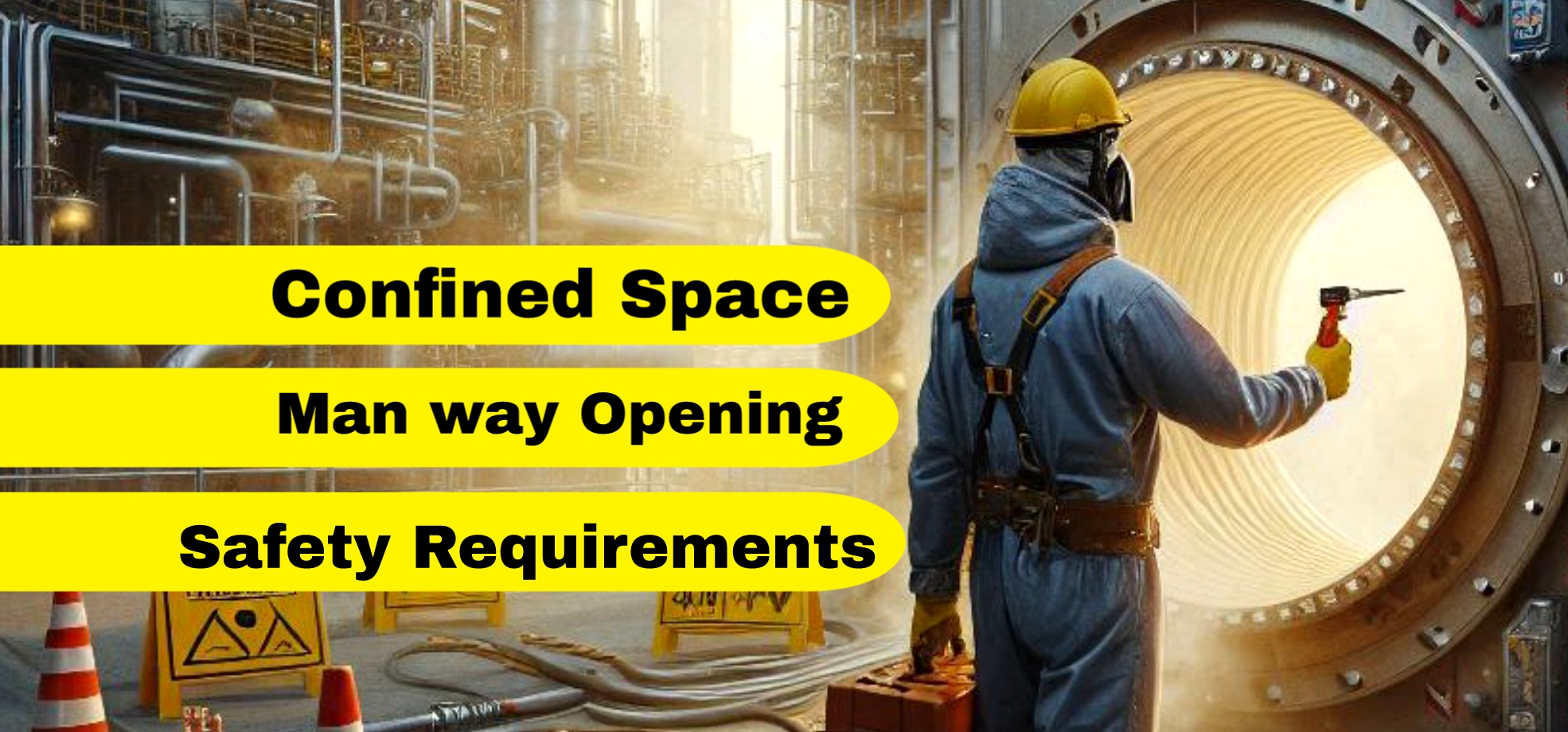10 Safety Requirements for Confined Space Manway Opening
Introduction to Confined Space and Manway Openings
Introduction
Confined spaces—like tanks, silos, and pipelines—are restricted areas that come with specific hazards, such as poor ventilation and limited exit routes. These areas require caution, especially when opening entry points known as "manways." Manways provide access for inspections or maintenance but can introduce serious risks like gas release or exposure to hazardous chemicals. Here, we outline ten essential safety steps for opening a confined space manway safely.
Follow are the
10 Safety Requirements for Confined Space Manway Opening
Safety Requirements for Confined Space Manway Opening
1. Awareness of Confined Space and Manway Hazards
Before any work begins, it's essential to brief all employees about the potential hazards of confined spaces and the specific risks associated with manway openings. Dangers may include toxic gases, lack of oxygen, and accidental energy release. Proper awareness reduces the chance of unexpected incidents and ensures that workers are prepared.
2. Valid Work Permit
A confined space entry permit is non-negotiable. This permit confirms that all necessary safety checks—like isolation, gas testing, and emergency response plans—are in place. It also clarifies which workers are authorized to enter, reducing unauthorized access and keeping the space controlled.
3. Equipment Checklist
Ensure all required equipment is on-site and in working order. Essential tools include gas detectors, personal protective equipment (PPE), non-sparking tools, and communication devices. Equipment readiness reduces delays and helps manage risks effectively.
4. Isolation and Lockout/Tagout (LOTO)
All energy sources connected to the confined space—whether electrical, hydraulic, or mechanical—should be isolated and locked out. This precaution prevents accidental activation of equipment, a major risk during maintenance in confined spaces.
5. Gas Testing Before Work Begins
Before opening the manway, conduct gas tests to assess oxygen levels and check for hazardous gases like carbon monoxide and hydrogen sulfide. Continuous monitoring is essential during the job to detect any buildup of dangerous gases over time.
6. Firefighting Arrangements
Firefighting equipment such as fire extinguishers and water hoses should be easily accessible near the confined space. Designate a fire watch person to monitor the area and respond quickly in case of fire, especially if the space contains flammable materials.
7. Certified and Non-Sparking Tools
Only certified tools, especially non-sparking ones, should be used to reduce ignition risks. All tools should meet certification standards to ensure they are safe for use in confined spaces where flammable gases might be present.
8. Proper Manway Opening Techniques
If the equipment holds liquids, start by loosening bolts on the downside to avoid spills.
If it holds gas, open bolts on the opposite side from where the worker stands to avoid direct exposure to gas release.
9. Use a Deep Tray to Prevent Spillage
Place a deep tray beneath the manway to catch any remaining liquids and prevent spillage. This precaution protects both workers and the environment by containing any potentially hazardous substances.
10. Barricade and Warning Signs
Once the manway is opened, set up barriers and warning signs to keep unauthorized personnel away. Barricades and signs alert nearby workers of the ongoing work and possible dangers, keeping the area secure.
Hazards in Confined Space Manway Opening
Opening a manway in confined spaces poses unique risks. Some primary hazards include:
1. Stored Energy
Confined spaces can contain stored energy that, if released suddenly, may cause harm. Properly isolating and managing this energy is crucial.
2. Fire Risk
Confined spaces with flammable gases or vapors are highly susceptible to fires, which is why fire prevention and quick response arrangements are necessary.
3. Chemical Spills
Chemical residues can leak when a manway is opened, leading to health risks or environmental damage if not contained.
4. Gas Release
Toxic or flammable gases may be released. Continuous monitoring can help detect dangerous gas levels before they pose a threat.
5. Oxygen Deficiency
Low oxygen levels can lead to suffocation, making gas testing critical to ensure a safe working environment.
6. Slip and Fall Hazards
Liquids around the manway can create a slip hazard. Keeping the area dry and organized can help prevent accidents.
Related Article
Conclusion
Opening manways in confined spaces requires careful preparation and strict adherence to safety protocols. Following steps like obtaining work permits, testing for gases, isolating energy sources, and using non-sparking tools can reduce risks significantly. Awareness and proper planning are key to navigating confined space tasks safely. With these safety measures, teams can perform confined space work effectively and maintain a safe environment for everyone involved.



.jpg)









.png)


0 Comments